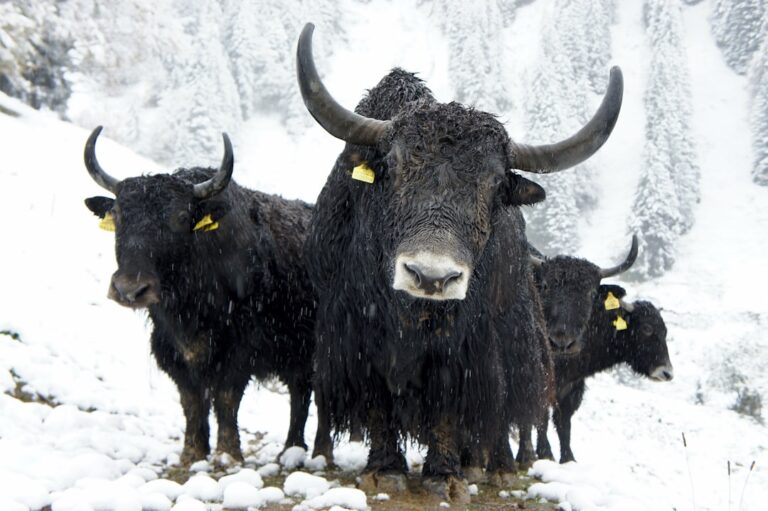The Atlas beetle, also known as Chalcosoma atlas, is a species of rhinoceros beetle native to Southeast Asia, particularly in countries like Malaysia, Indonesia, and Thailand. It is one of the largest beetles in the world, with males reaching lengths of up to 13 centimeters (5 inches) and females reaching lengths of up to 8 centimeters (3 inches). The Atlas beetle is named after the Titan Atlas from Greek mythology, who was known for his incredible strength and power, which is fitting given the impressive physical characteristics and strength of this remarkable insect.
The Atlas beetle belongs to the family Scarabaeidae, which includes over 30,000 species of beetles worldwide. These beetles are known for their distinctive horns and powerful mandibles, which they use for various purposes such as fighting for mates and defending themselves from predators. The Atlas beetle is a popular species among insect enthusiasts and collectors due to its impressive size and unique appearance. Its large size and striking coloration make it a fascinating subject for study and observation, and it plays a significant role in its natural ecosystem.
Key Takeaways
- The Atlas Beetle is a species of rhinoceros beetle known for its impressive size and strength.
- With its large, horned body and powerful mandibles, the Atlas Beetle is a formidable creature in the insect world.
- These beetles are found in tropical forests across Southeast Asia and feed on decaying wood and fruits.
- The life cycle of the Atlas Beetle includes a larval stage where they feed on decaying wood before transforming into adults.
- Atlas Beetles play a crucial role in the ecosystem by aiding in the decomposition of organic matter and contributing to nutrient cycling.
Physical Characteristics and Strength
The Atlas beetle is easily recognizable by its large size and distinctive horns, which are present in males and used for combat and mating rituals. The male Atlas beetle has a long, curved horn on its head, which it uses to battle other males for dominance and access to females. In contrast, the female Atlas beetle lacks these horns but has a more rounded and compact body. Both males and females have a glossy black exoskeleton with hints of green or blue iridescence, giving them a stunning appearance.
One of the most impressive features of the Atlas beetle is its incredible strength. Despite its relatively small size compared to other animals, the Atlas beetle is capable of carrying objects over 850 times its body weight. This remarkable strength is due to its powerful mandibles, which it uses to crush and carry food as well as defend itself from predators. The Atlas beetle’s ability to carry such heavy loads showcases its remarkable physical capabilities and makes it a formidable force in its natural habitat.
Habitat and Diet
The Atlas beetle is primarily found in tropical rainforests and lowland areas throughout Southeast Asia. These habitats provide the beetle with the warm, humid conditions it needs to thrive, as well as an abundance of decaying organic matter for food. The larvae of the Atlas beetle are often found in rotting wood, where they feed on decomposing plant material and develop into adults over several months.
As adults, Atlas beetles feed on a variety of fruits, nectar, and sap from trees, as well as decaying plant matter on the forest floor. They play an essential role in the ecosystem by aiding in the decomposition of organic material and contributing to nutrient cycling in their habitat. The Atlas beetle’s diet also includes smaller insects and invertebrates, which they capture using their powerful mandibles. Their diverse diet and ability to break down organic matter make them valuable contributors to the health of their natural environment.
Life Cycle and Reproduction
| Species | Life Cycle | Reproduction |
|---|---|---|
| Frog | Egg, Tadpole, Froglet, Adult | External fertilization, laying eggs in water |
| Butterfly | Egg, Larva, Pupa, Adult | Internal fertilization, laying eggs on host plants |
| Human | Infant, Child, Adolescent, Adult | Internal fertilization, live birth |
The life cycle of the Atlas beetle begins when a female lays her eggs in decaying wood or compost. The eggs hatch into larvae, which spend several months feeding and growing within their woody environment. As they mature, the larvae undergo several molts before pupating and eventually emerging as adult beetles.
During the breeding season, male Atlas beetles engage in fierce battles with one another to establish dominance and access to females. These battles involve pushing and grappling with their horns, with the victor earning the right to mate with receptive females. Once mating occurs, the female will lay her eggs in a suitable location, starting the life cycle anew.
The reproductive behavior of the Atlas beetle is essential for maintaining healthy populations in their natural habitat. Their role in nutrient cycling and decomposition also contributes to the overall health of the ecosystem, making them a vital component of their native environment.
Importance in the Ecosystem
The Atlas beetle plays a crucial role in its ecosystem by contributing to nutrient cycling and decomposition. As larvae, they break down decaying wood and plant material, aiding in the process of organic matter recycling. This helps to release nutrients back into the soil, which benefits plant growth and supports the overall health of the forest ecosystem.
As adults, Atlas beetles continue to contribute to their ecosystem by feeding on fruits, nectar, and sap from trees. In doing so, they aid in pollination and seed dispersal, helping to maintain the diversity and abundance of plant species within their habitat. Additionally, their predation on smaller insects and invertebrates helps to regulate populations of potential pests, contributing to the balance of their ecosystem.
The presence of Atlas beetles in their natural habitat also provides food for other animals within the food chain. Birds, reptiles, and mammals may prey on adult beetles or their larvae, further demonstrating their importance as a food source for other species. Overall, the Atlas beetle’s role in nutrient cycling, pollination, seed dispersal, and as a food source highlights its significance within its ecosystem.
Human Interaction and Conservation Efforts

The Atlas beetle has long been admired by humans for its impressive size and strength, leading to its popularity among insect enthusiasts and collectors. However, this popularity has also led to increased demand for live specimens and specimens for use in traditional medicine or as decorative items. As a result, the Atlas beetle faces threats from habitat loss due to deforestation as well as overcollection for commercial purposes.
Conservation efforts for the Atlas beetle focus on protecting its natural habitat through measures such as establishing protected areas and promoting sustainable forestry practices. Additionally, education and outreach programs aim to raise awareness about the importance of conserving this species and its role in maintaining healthy ecosystems.
Efforts to breed Atlas beetles in captivity for research purposes and educational outreach have also been undertaken to reduce pressure on wild populations. By studying their behavior, life cycle, and ecological interactions, researchers can gain valuable insights into how best to conserve this remarkable species for future generations.
Fascinating Facts about the Atlas Beetle
1. The Atlas beetle’s horns are primarily used for combat between males during mating rituals but can also be used for defense against predators.
2. Despite their large size, Atlas beetles are capable of flight and are often attracted to lights at night.
3. The larvae of the Atlas beetle can take several months to develop into adults, depending on environmental conditions.
4. The iridescent coloration of the Atlas beetle’s exoskeleton is caused by microscopic structures that reflect light in different wavelengths.
5. In some cultures, the Atlas beetle is considered a symbol of strength and power and is used in traditional medicine or as a good luck charm.
In conclusion, the Atlas beetle is a remarkable species with impressive physical characteristics and strength that make it a fascinating subject for study and observation. Its role in nutrient cycling, pollination, seed dispersal, and as a food source highlights its significance within its ecosystem. Conservation efforts are essential for protecting this species from threats such as habitat loss and overcollection, ensuring that future generations can continue to admire and learn from this incredible insect.
If you’re interested in learning more about the atlas beetle, you should check out this article on Maple Lane Farm. They have a great piece on the fascinating behavior and characteristics of the atlas beetle, as well as tips on how to care for them in captivity. It’s a must-read for anyone intrigued by these incredible creatures.
FAQs
What is an atlas beetle?
An atlas beetle is a species of beetle belonging to the family Scarabaeidae. It is known for its large size and impressive horn-like projections on the males.
Where are atlas beetles found?
Atlas beetles are native to Southeast Asia, including countries such as Malaysia, Indonesia, and Thailand. They are typically found in tropical rainforests.
What do atlas beetles eat?
Atlas beetles are primarily known to feed on decaying wood and fruits. They are considered to be important decomposers in their natural habitat.
How big do atlas beetles get?
Atlas beetles are among the largest beetles in the world, with males reaching sizes of up to 60-110 millimeters in length, including their horns. Females are generally smaller, with shorter horns.
Are atlas beetles aggressive?
Male atlas beetles are known to be territorial and can display aggressive behavior towards other males, especially during mating competitions. However, they are not known to be aggressive towards humans unless provoked.
Do atlas beetles have any predators?
Atlas beetles have a few natural predators in their habitat, including birds, reptiles, and other insects. Their tough exoskeleton and large size provide some protection against predators.













+ There are no comments
Add yours